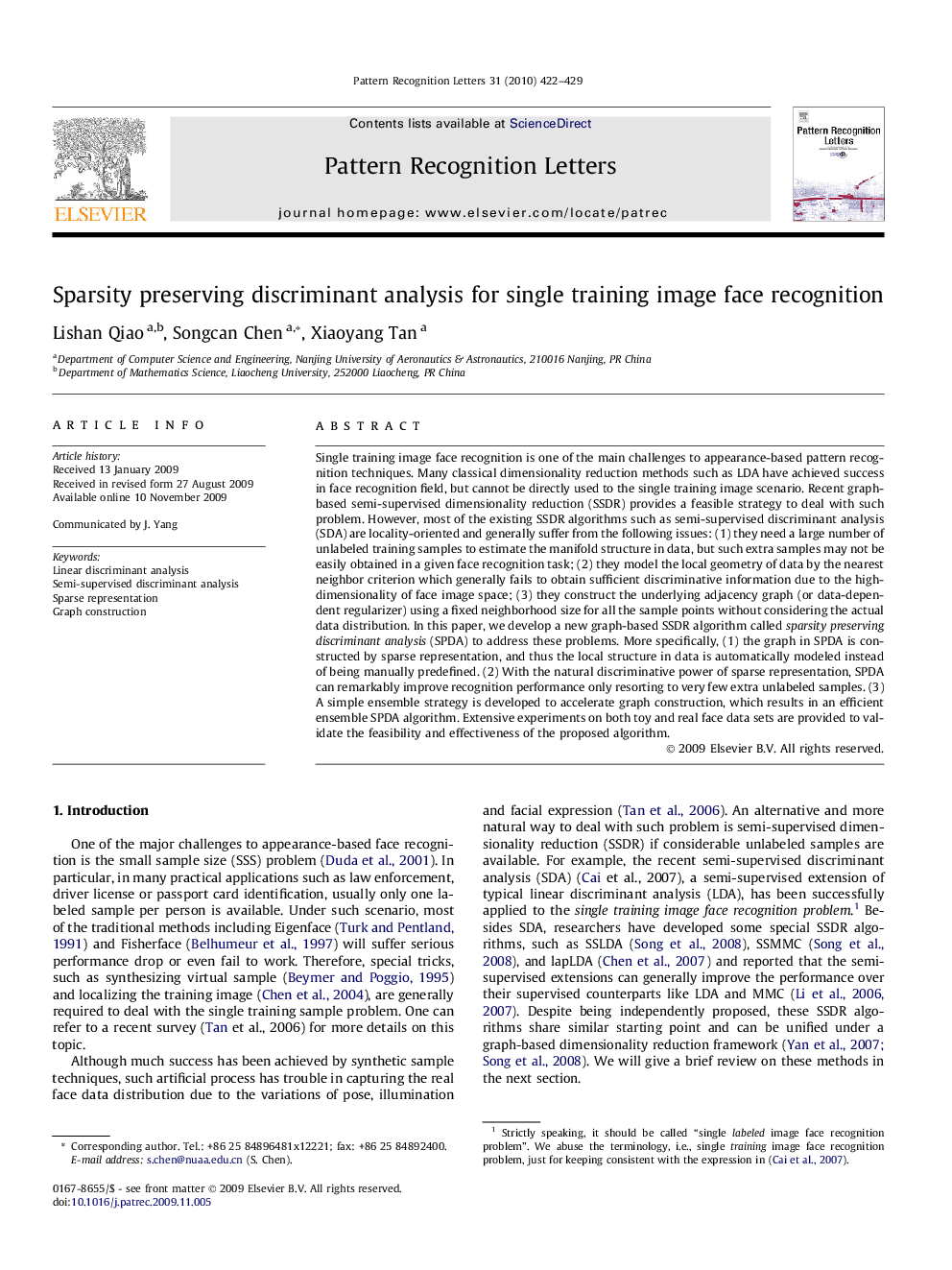| کد مقاله | کد نشریه | سال انتشار | مقاله انگلیسی | نسخه تمام متن |
|---|---|---|---|---|
| 534812 | 870292 | 2010 | 8 صفحه PDF | دانلود رایگان |

Single training image face recognition is one of the main challenges to appearance-based pattern recognition techniques. Many classical dimensionality reduction methods such as LDA have achieved success in face recognition field, but cannot be directly used to the single training image scenario. Recent graph-based semi-supervised dimensionality reduction (SSDR) provides a feasible strategy to deal with such problem. However, most of the existing SSDR algorithms such as semi-supervised discriminant analysis (SDA) are locality-oriented and generally suffer from the following issues: (1) they need a large number of unlabeled training samples to estimate the manifold structure in data, but such extra samples may not be easily obtained in a given face recognition task; (2) they model the local geometry of data by the nearest neighbor criterion which generally fails to obtain sufficient discriminative information due to the high-dimensionality of face image space; (3) they construct the underlying adjacency graph (or data-dependent regularizer) using a fixed neighborhood size for all the sample points without considering the actual data distribution. In this paper, we develop a new graph-based SSDR algorithm called sparsity preserving discriminant analysis (SPDA) to address these problems. More specifically, (1) the graph in SPDA is constructed by sparse representation, and thus the local structure in data is automatically modeled instead of being manually predefined. (2) With the natural discriminative power of sparse representation, SPDA can remarkably improve recognition performance only resorting to very few extra unlabeled samples. (3) A simple ensemble strategy is developed to accelerate graph construction, which results in an efficient ensemble SPDA algorithm. Extensive experiments on both toy and real face data sets are provided to validate the feasibility and effectiveness of the proposed algorithm.
Journal: Pattern Recognition Letters - Volume 31, Issue 5, 1 April 2010, Pages 422–429